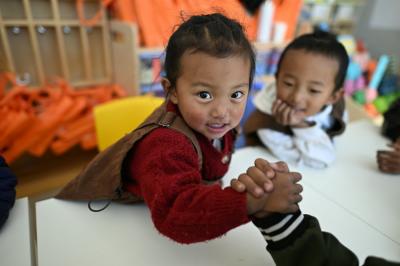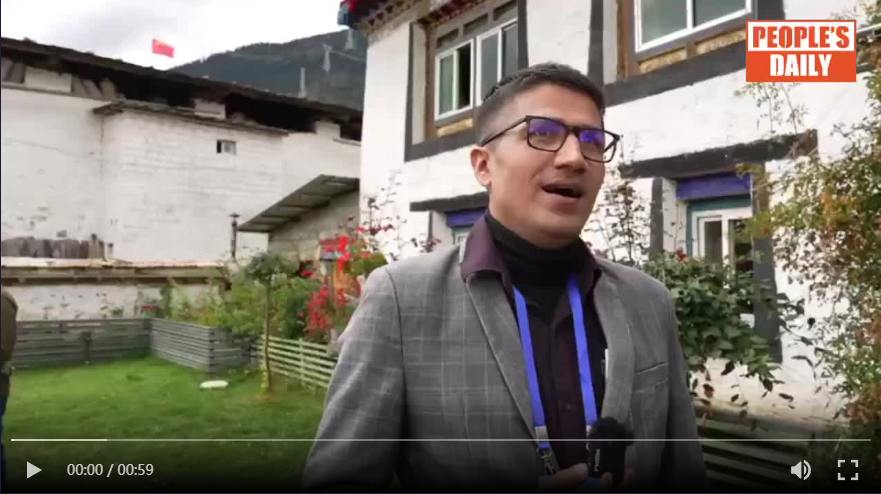 In this combo photo, the upper part taken by Ren Yongzhao shows patients walking to the doctors' offices at Lhasa People's Hospital in the 1950s; and the lower part taken by Sun Ruibo on April 19, 2021 shows surgeons of Lhasa People's Hospital using a robot to perform an orthopaedic surgery under the remote guidance of experts from Beijing Jishuitan Hospital through 5G communication technology. (Xinhua)
LHASA, Aug. 16 -- Kunsang still remembers the major surgery he underwent five years ago, and is grateful to the surgeon Zhang Yang.
In 2017, Kunsang was diagnosed with a meningioma, a large brain tumor, in a local hospital in southwest China's Tibet Autonomous Region.
Due to the complexity of the operation, Kunsang was suggested to receive treatment outside Tibet. However, his family didn't want him to travel to an unfamiliar place.
Zhang Yang, a doctor at Peking University First Hospital, was attending a pairing-up assistance program in Tibet. Having learnt what happened to Kunsang, he decided to do something for the Tibetan teacher.
Zhang made sure Kunsang's family were aware of the risks of the surgery. He made a detailed surgical plan, and performed the surgery. After more than 10 hours of surgery, Kunsang's tumor was successfully removed.
Since 2015, to improve the region's medical services, China has sent over 1,300 medical professionals from more than 60 hospitals from seven provincial-level regions, and hospitals directly under the National Health Commission to Tibet.
They've not only brought advanced medical technologies and management methods to the region, but they have also trained more than 2,400 local medical personnel.
"Thanks to the pairing-up aid program, many Tibetan can see a doctor without traveling far, reducing the otherwise heavy economic burden," said Gesang Yudron, director of the regional health commission.
Since the end of 2021, more than 400 serious illnesses can be treated in the region, according to Gesang Yudron, noting that the average life expectancy in Tibet rose from 68.2 years in 2015 to 72.19.
Apart from the medical sector, the educational sector in Tibet has also benefited from the pairing up assistance program, as well as a large amount of funds and a series of policies introduced by the country over the past decade.
Teachers from schools from 17 provincial-level regions and 30 elementary and secondary schools affiliated to universities directly under the Ministry of Education have carried out educational exchange activities in local schools in Tibet since December 2015. During this time, they have also shared teaching approaches and management methods with the schools.
Drawing on the experience of medical and educational pairing up assistance, more sectors including agricultural industry and tourism industry are expected to be provided with more tailored assistance in a bid to help promote the all-round development of the plateau region.
|
- Home
- News Tibet |Exclusive |China |World |Related News |Latest
- Documents White Papers |Others
- Photo Politics |Economy & Society |Culture & Religion |Human & Nature |Beautiful Tibet |Other Tibetan-Inhabited Area |Exchanges |Related
- Video News |Documentary |Micro-Video |Entertainment
- Art
- Tourism
- In Focus
- About Tibet






